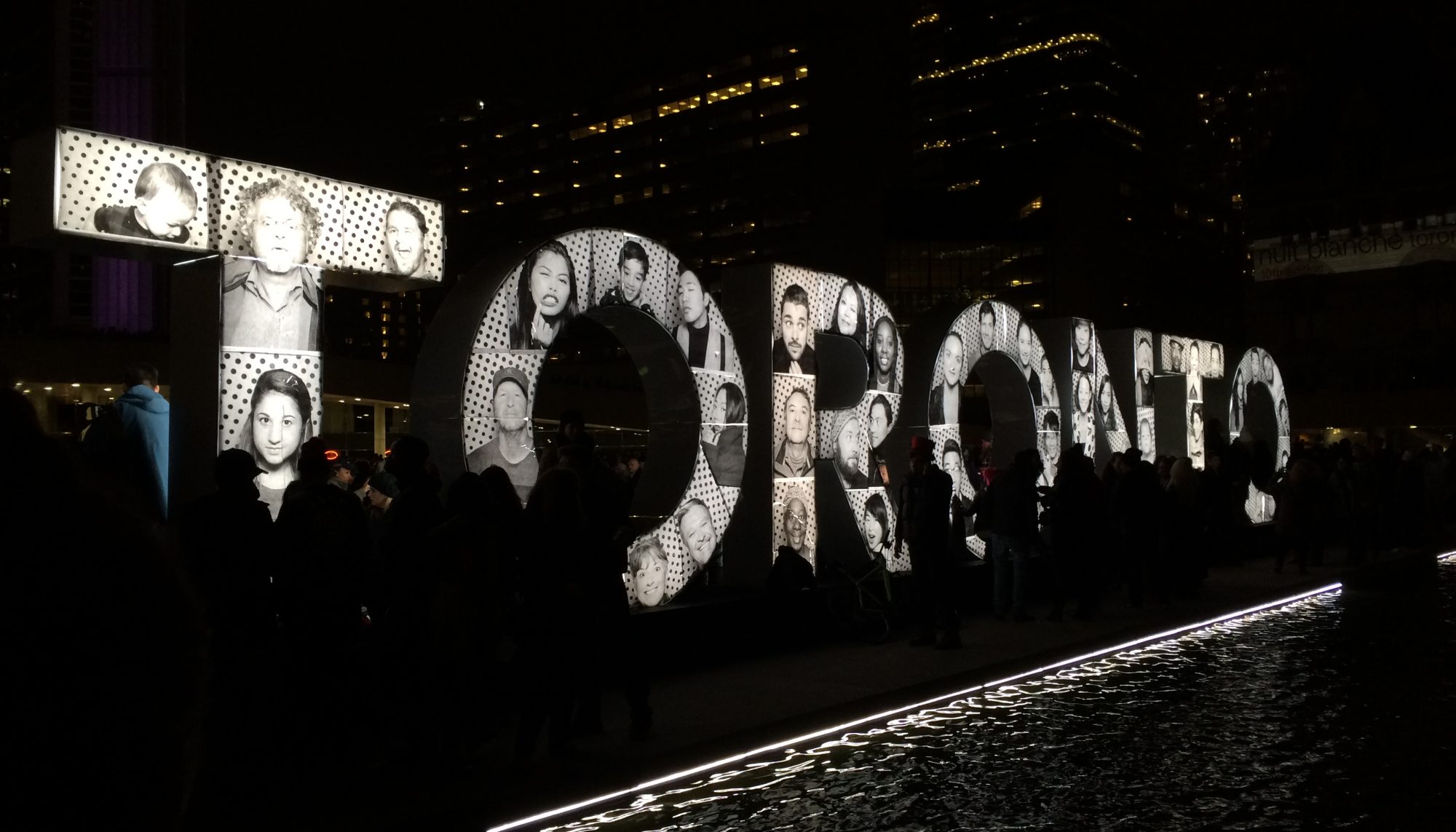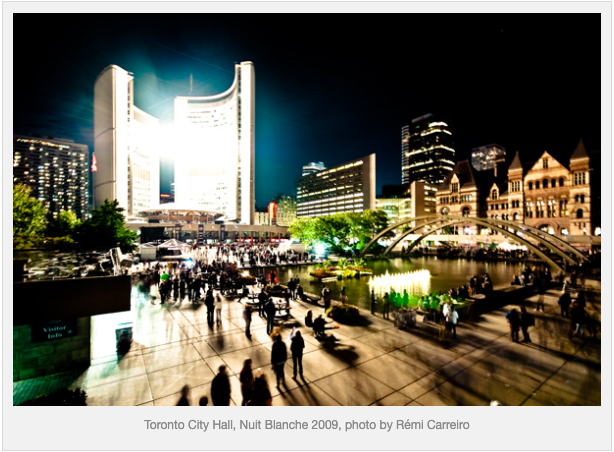I stumbled on this feature article on our SSHRC funded, social media creative research project. In 2010, Faisal Anwar and I began our investigation of how people were using Twitter as a wayfinding tool during Toronto’s all night arts event, Scotiabank Nuit Blanche.
We built a Tweet analytic tool, archived tweets tagged with event specific hashtags (#NuitBlancheTO, #snbTO …), and ran searches based on event and installation names, that mapped people flows through the event’s various zones.
Over three years, our research expanded to content shared via flickr, YouTube, and Instagram, revealing a communal psychogeography generated over multiple platforms during the 12 hour event and after.
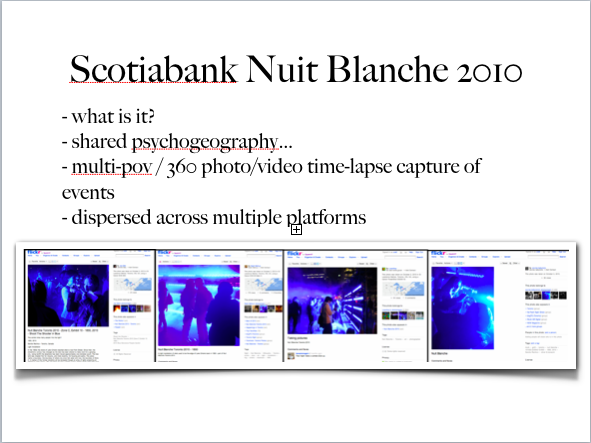
Working with research assistants, we often found specific moments captured by multiple individuals, offering a proto-photosynth data set that could be restitched, roughly, for a loose, sometimes 360 degree public documentary.
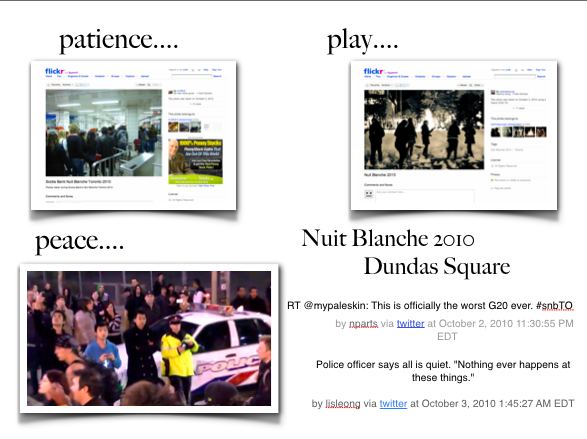
As I wrote then in an essay published in Public (2012), edited by Jim Drobnick and Jennifer Fisher, “These exchanges make visible the fluid actualization and processual experience of participatory, emergent public(s) that accord with how Michael Warner defines a ‘public’: that it is self-organizing, involves a relation amongst strangers, is simultaneously personal and impersonal in address, is constituted only through attention, and provides a discursive public space.“
In addition, we discovered that striking groups of participants would appear over the night in disparate photos and videos, as they traversed Nuit Blanche installations. One year in particular, it was a group of young people wearing oversized mustaches. Another year it was an indie band in costume, playing through the streets.
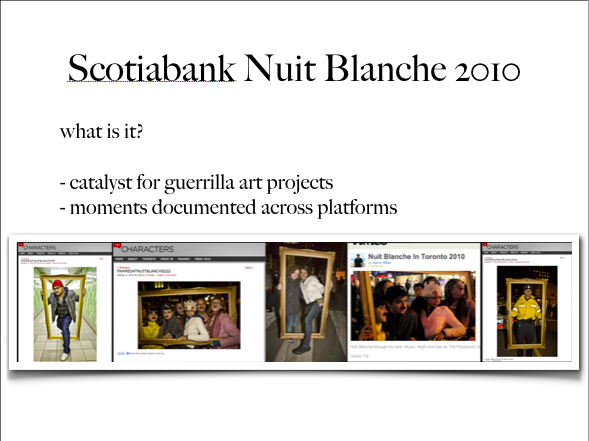
What I realized very quickly was the depth and scale of information we had available as to individual’s movements and activities, and the potential infringement of individual privacy. The question of privacy in the digital public sphere, however, was complicated by, #1 Twitter’s mandate to share widely, and #2 the use of hashtags which explicitly tag tweets as meant for a wider conversation and viewing by strangers.
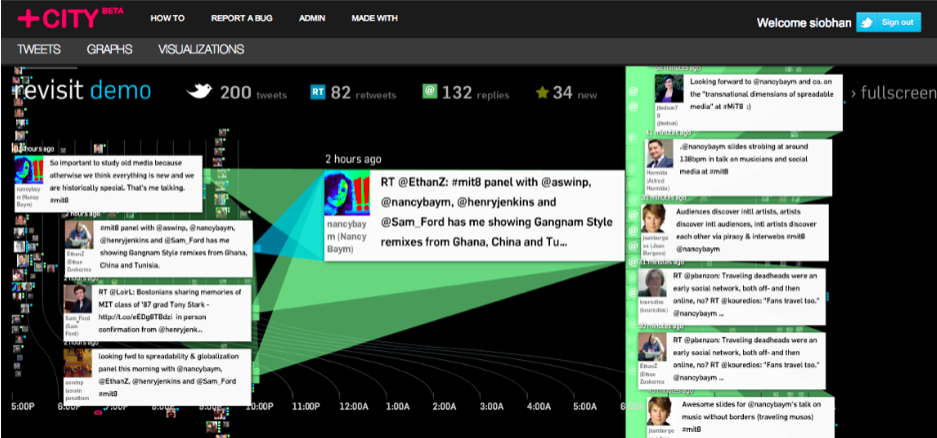
My concerns with data privacy started here. Even with our tool in beta, the data aggregation from Twitter coupled with content analysis on other social media sharing platforms, all public, all accessible, made the outlines of the surveillance state visible.
